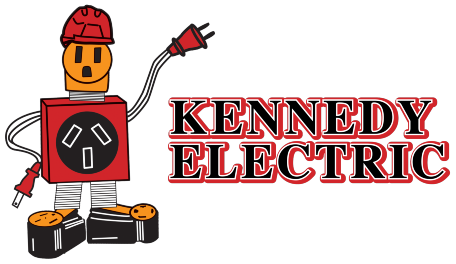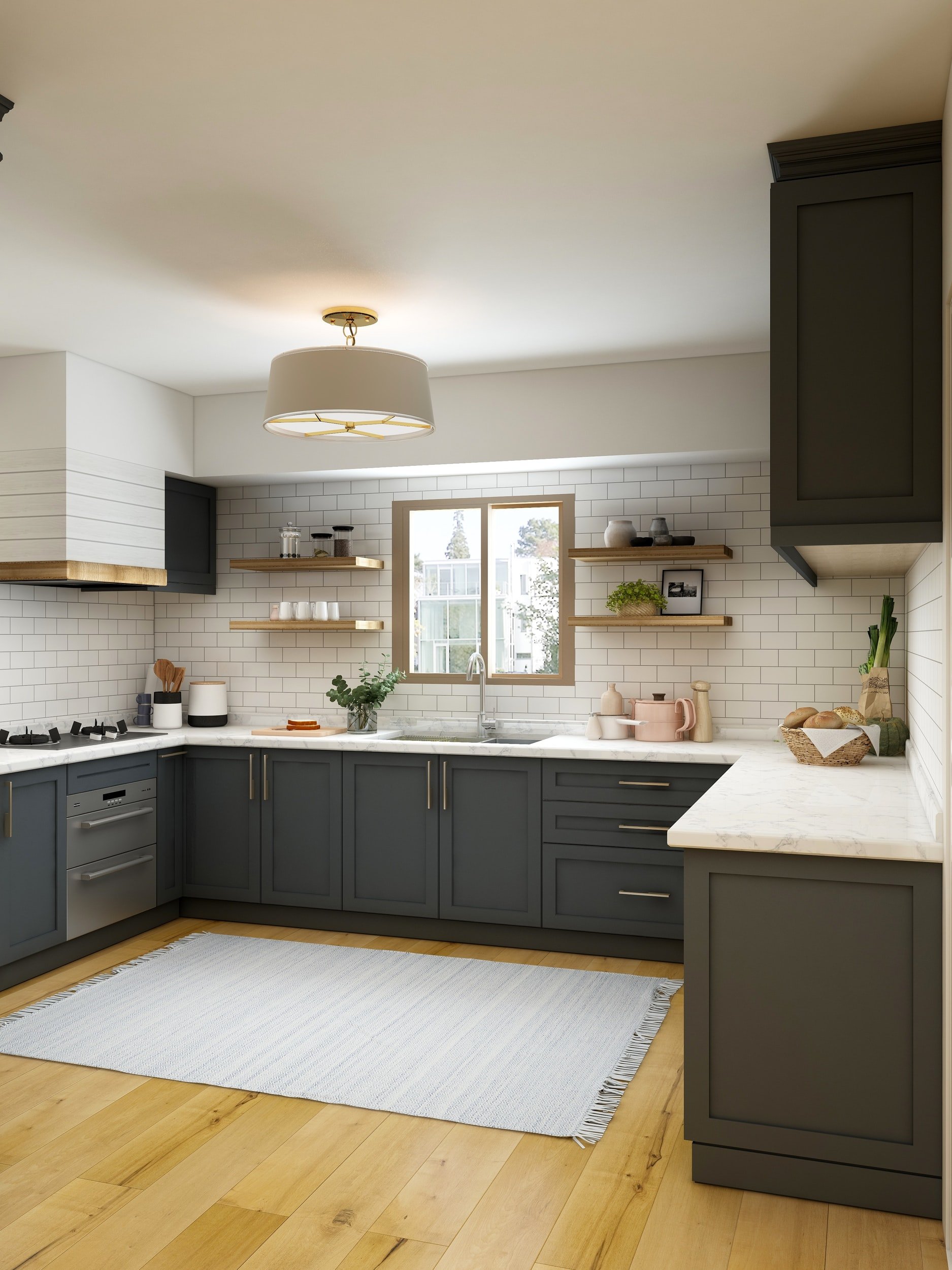What’s the Buzz on Kitchen Electrical Code Requirements?
Understanding kitchen electrical code requirements helps homeowners make smart decisions, especially when partnering with a professional kitchen electrical company.
The kitchen is the heart of every home—and the hungriest room for electricity. From coffee makers and toasters to dishwashers and microwaves, today’s kitchens demand careful planning and professional expertise to stay safe and functional. That’s why the National Electrical Code (NEC) kitchen requirements are constantly evolving. They’re not just technical rules; they’re a set of safety measures designed to protect families, preserve property, and support the power needs of modern living. Understanding kitchen electrical code requirements helps homeowners make smart decisions, especially when partnering with a professional kitchen electrical company.
Understanding the Purpose of Kitchen Electrical Codes
The NEC, updated every three years, sets nationwide standards for safe electrical installations. These codes evolve with technology, lifestyle changes, and new appliances that draw higher loads. Following kitchen wiring code requirements isn’t just about compliance—it’s about avoiding dangerous overloads, electrical fires, or power interruptions.
Different regions may have their own amendments, so it’s crucial to check with local authorities or a licensed kitchen electrical expert before starting any installation or renovation. When properly followed, kitchen electrical codes guarantee every outlet, circuit, and fixture works safely and efficiently in the heart of the home.
The Foundation of NEC Kitchen Requirements
Professional electricians treat kitchen electrical installation as one of the most important parts of a remodel. The NEC kitchen requirements outline how circuits should be distributed, where outlets should be placed, and which safety devices must be installed. They emphasize preventing overloads, managing moisture exposure, and maintaining accessibility.
In essence, the NEC kitchen requirements protect homeowners from the risks associated with modern, high-demand electrical usage. Whether it’s a new build or a renovation, guaranteeing that your kitchen meets these standards is essential for both safety and resale value.
Kitchen Circuit Requirements and Why They Matter
The NEC kitchen circuit requirements mandate that kitchens must have at least two 20-amp, 120-volt small appliance circuits serving countertop outlets. These circuits power everyday appliances like blenders, toasters, and slow cookers. Spreading appliances across multiple circuits reduces the chance of tripped breakers and overheated wires.
Major appliances such as ovens, microwaves, and dishwashers require their own dedicated circuits under NEC dedicated circuit requirements. A refrigerator, for example, may need a 15- or 20-amp circuit, while an electric range often demands a 50-amp 240-volt circuit. Each circuit is designed to manage a specific load safely. Skipping or combining these circuits can overload your system and pose serious safety risks.
Kitchen Outlet Requirements
The NEC kitchen outlet requirements dictate outlet placement to make kitchens both convenient and safe. Outlets must be installed so that no point along a countertop is more than four feet from an outlet, and none should be more than twenty inches above the counter. Islands and peninsulas also need at least one outlet if their surface area is 24 by 12 inches or larger.
This layout guarantees that homeowners can use multiple appliances without resorting to unsafe extension cords or power strips. Additionally, all outlets serving countertops must include GFCI protection, which is crucial for preventing electrical shock in areas prone to moisture.
GFCI and AFCI Protection: Safety First
GFCI (Ground Fault Circuit Interrupter) outlets are now standard in kitchens under the NEC kitchen electrical codes. They detect imbalances in electrical current and shut off power in milliseconds, preventing shocks and electrical fires. Any outlet near a sink or other water source must have GFCI protection.
AFCI (Arc Fault Circuit Interrupter) protection is another essential layer of safety. While GFCIs guard against shock, AFCIs protect against fires produced by arcing faults, which can occur from damaged wiring or loose connections. Professional electricians incorporate both devices in their kitchen electrical services to ensure a secure and compliant system.
Dedicated Circuits for Major Appliances
Kitchens are loaded with energy-hungry appliances, and the NEC makes clear distinctions on which ones require their own circuits.
Dishwasher: Typically on a 15-amp, 120-volt GFCI-protected dedicated circuit.
Microwave: Requires a 20-amp, 120-volt circuit using 12/2 cable.
Garbage disposal: Uses its own 15-amp, 120-volt circuit.
Range or oven: Demands a 50-amp, 240-volt circuit due to heavy power consumption.
Refrigerator: Often on a 20-amp dedicated circuit to avoid tripping shared breakers.
Following NEC dedicated circuit requirements prevents nuisance tripping and safeguards the performance of large appliances. When handled by a professional kitchen electrical company, these circuits are properly balanced to support long-term safety and reliability.
Kitchen Lighting and Wiring Code Requirements
Lighting in the kitchen must meet the NEC kitchen wiring code requirements to maintain both visibility and safety. Every kitchen requires at least one 15-amp lighting circuit. However, many electricians install additional circuits to handle task lighting, under-cabinet lights, and accent fixtures.
Proper kitchen wiring guarantees lights remain functional even when another circuit trips. Electricians also verify that switches, dimmers, and fixtures are rated for the circuit they serve. Grounding and bonding practices are applied throughout to create a continuous, safe path for electrical current.
Tamper-Resistant Outlets and Child Safety
Tamper-resistant outlets are another NEC requirement designed to prevent electrical injuries. These outlets feature built-in shutters that open only when equal pressure is applied to both slots, effectively blocking foreign objects. Professional kitchen electrical installation includes these outlets in all accessible areas, guaranteeing compliance and protection—essential in households with children.
Grounding and Bonding
Every professional electrician knows that grounding and bonding are non-negotiable. Grounding provides a direct path for stray electricity to travel safely into the earth during a fault. Bonding connects all conductive components—like metal pipes, appliances, and boxes—so they share the same electrical potential, minimizing shock hazards.
When a kitchen electrical expert evaluates a system, they ensure all grounding conductors are continuous and connections are secure. This foundational safety feature keeps every part of the kitchen system stable and protected.
Upgrading Older Kitchens to Meet Today’s Standards
Older kitchens often lack sufficient outlets, modern wiring, or safety features. Many still rely on outdated two-prong outlets or shared circuits. Bringing these spaces up to current NEC kitchen requirements often involves rewiring, panel upgrades, and additional circuits.
A professional kitchen electrical company evaluates existing wiring, determines load capacity, and designs an upgrade plan that meets today’s kitchen electrical code. While upgrading may seem like a big step, it significantly enhances safety, functionality, and home value.
Smart Kitchens and Modern Technology
As homeowners adopt smart appliances, charging stations, and energy-efficient lighting, new electrical considerations arise. The NEC continues to evolve to support these technologies. Electricians now design kitchens with flexible circuits capable of handling both high-demand appliances and low-voltage smart systems.
Integrating automation systems, smart switches, and Wi-Fi-enabled lighting requires precise attention to kitchen wiring and compliance with NEC kitchen requirements. By consulting a professional kitchen electrical expert, homeowners can future-proof their kitchens while staying within code.
Professional Vs. DIY Kitchen Electrical Work
Electrical work is never the place to cut corners. DIY attempts often overlook crucial safety features or violate NEC kitchen electrical codes. Professional electricians are trained to interpret these complex regulations, secure proper load calculations, and test systems for safety.
Hiring a licensed electrician guarantees compliance with both national and local requirements, including kitchen wiring code requirements. Their expertise prevents costly mistakes and provides documentation for insurance and home sales.
Regional and Local Compliance Considerations
While the NEC provides national guidance, local jurisdictions may impose additional kitchen electrical requirements. Cities with high humidity, for example, might require enhanced GFCI coverage, while others adopt earlier or later editions of the NEC. A professional electrician is familiar with both the NEC and local amendments, guaranteeing your kitchen meets every applicable standard.
Homeowners should also verify permit requirements for kitchen electrical installation projects. Many municipalities require inspections and approvals before work begins, confirming that everything meets code from start to finish.
Benefits of Code-Compliant Kitchen Electrical Installation
Hiring a professional for code-compliant kitchen electrical services provides ease of mind, long-term savings, and safety. Key benefits include:
• Protection against electrical shocks and fires.
• Optimized energy distribution for all appliances.
• Compliance with NEC and local standards.
• Increased property value and easier insurance approval.
• Reliable performance with fewer tripped breakers or power losses.
These benefits make working with a trusted kitchen electrical company a smart investment for any homeowner.
FAQs
What are the NEC kitchen requirements for outlets?
Outlets must be placed so that no point along the countertop is more than four feet from an outlet, and all must include GFCI protection. Islands and peninsulas with countertop space also require outlets.
How many circuits does a kitchen need?
The NEC mandates at least two 20-amp small appliance circuits, plus dedicated circuits for major appliances like dishwashers, microwaves, and ovens.
Do older kitchens need rewiring?
Yes, many older kitchens require rewiring to meet modern safety standards and handle today’s appliance loads. A licensed kitchen electrical expert can perform a detailed inspection and recommend necessary upgrades.
What is a dedicated circuit, and why is it important?
A dedicated circuit powers only one appliance, preventing overloads and ensuring stable operation. These are required for heavy-duty kitchen appliances such as ranges and dishwashers.
Do GFCI and AFCI outlets serve different purposes?
Yes. GFCIs protect against electrical shock, while AFCIs guard against fires caused by arcing faults. Both are essential in kitchen environments.
How often should kitchen electrical systems be inspected?
It’s wise to schedule an inspection every few years or during any renovation. A professional electrician can confirm compliance with the latest kitchen electrical code requirements.
Key Takeaways
The NEC kitchen requirements may seem detailed, but they exist to safeguard homes and families. Professional electricians make sure every wire, outlet, and appliance connection supports your daily cooking routines safely and efficiently. When your kitchen meets or exceeds NEC standards, you’re not just following a rulebook—you’re creating a reliable foundation for comfort, performance, and peace of mind.
Partnering with an experienced kitchen electrical company ensures your kitchen meets today’s standards and anticipates tomorrow’s innovations. Whether upgrading an older space or building a dream kitchen from scratch, professional compliance with the NEC kitchen electrical codes is the recipe for safety, function, and long-lasting satisfaction.
Trust Kennedy Electric for expert hot tub electrical, exhaust fan installation, ceiling fan installation, whole-house electrical surge protection, GFCI outlet installation, and other residential electrical services in Citrus, Hernando, and Pasco Counties. Book a service by calling us at 352-799-3434.


